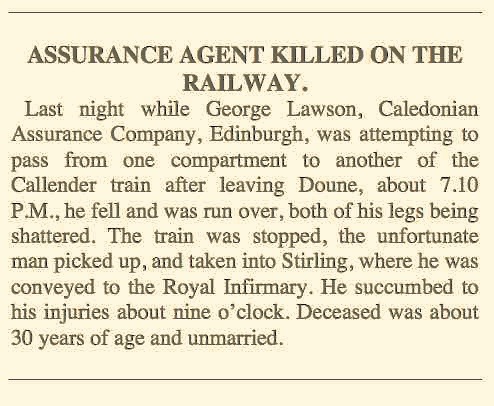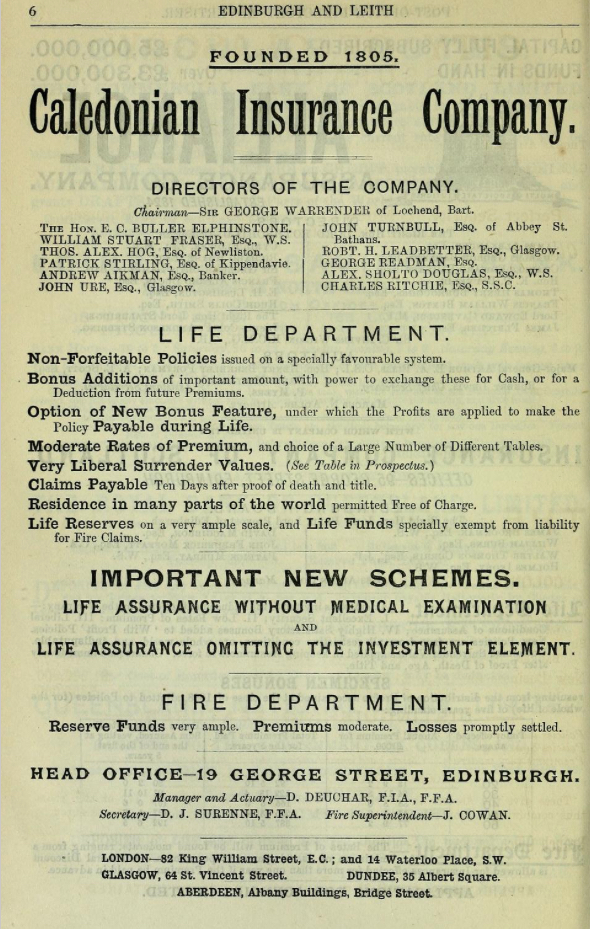
When Waterloo Place was constructed in 1819, it bisected Calton Burying Ground leaving a rump cemetery on the uphill northern side of the road.
Less well-known than the currently closed section overlooking Waverley which contains the grave of David Hume, it’s accessible via a short set of steps leading up from Calton Hill beside the Parliament House Hotel.
Despite its relative obscurity and meagre size, there is much of interest here, including this simple stone right at the centre:
Not all Victorian inscriptions comprise sentimental clichés and flowery religiosity. This one cuts straight to the point – 'killed at Stirling' and, as it was surely meant to, invites further enquiry.
An explanation is available in the pages of the Dundee Evening Telegraph.

This brief article appears in the edition of 20 May 1892 – the day before the date given on Lawson’s stone. The newspaper was certainly right about the timing, but it misnamed Lawson’s employer. The Caledonian Insurance Company had been established in Edinburgh, was headquartered in George Street, and – after various twists and turns – now forms part of the Royal London Group.

Railways were by no means risk-free for 19th-century travellers. An interesting table in J. Peabody Pattinson’s British Railways: Their Passenger Service, Rolling Stock, Locomotives, Gradients and Express Speeds (London: Cassell, 1893) reports that in 1890, of 817,744,146 passengers (excluding season-ticket holders), 18 were killed and 496 injured owing to causes beyond their control. In 1891, out of 845,463,000 similar passengers, five were killed and 875 injured.
So comparatively mundane were such railway accidents that Lawson’s death was not mentioned in any other local or national newspaper.